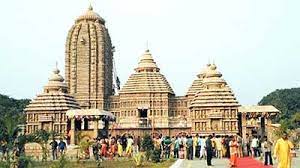08 Jan 2022 Jagannath Temple Act, 1954

Jagannath Temple- Today Current Affairs
- Recently, in a historic decision, the Odisha State Cabinet has approved amendments to the Sri Jagannath Temple Act of 1954.
Introduction:
- In the year 1806, the then British government had issued rules for the management of Jagannath Temple, which was called Juggernaut Temple by the colonial rulers.
- Under these rules, pilgrims visiting the temple were expected to pay taxes.
- The British government was entrusted with the task of appointing senior priests in the temple.
- The temple management powers were handed over to the Raja of Khordha three years later while the colonial government retained its control.
- After India got independence, Jagannath Temple Act, 1952 was introduced which came into force in the year 1954.
- The Act includes the land rights of the temple, the duties of the priests, the administrative powers of the Shree Jagannath Temple Management Committee, the privileges of the Raja of Puri and other persons connected with the management and administration of the temple.
Recent revision: The Hindu Analysis
- The power to sell and lease land in the name of Jagannath Temple will now be delegated to the temple administration and the concerned authorities.
- Unlike earlier, this process would not require any approval from the state government.
- Section 16(2) of the Act states that no immovable property in possession of the temple committee shall be leased, mortgaged, sold or otherwise transferred without the prior approval of the State Government.
Jagannath Temple: The Hindu Analysis
- It is believed that this temple was built in the 12th century by King Anantvarman Chodagung Dev of the Eastern Ganga Dynasty.
- Jagannath Puri Temple is also called ‘Yamanika Tirtha’, where according to Hindu beliefs, the power of ‘Yama’, the god of death has ended due to the presence of Lord Jagannath in Puri.
- This temple was called “White Pagoda” and is a part of Chardham pilgrimage (Badrinath, Dwarka, Puri, Rameshwaram).
- The temple has four main gates (‘Singh Dwar’ in the east, ‘Ashwa Dwar’ in the south, ‘Vyaghara Dwar’ in the west and ‘Hasti Dwar’ in the north). Each door is carved.
- Opposite its entrance stands the Arun Stambh or Surya Pillar, which was originally installed in the Sun Temple at Konark.
Other Important Monuments in Odisha: The Hindu Analysis
- Kornak Sun Temple (UNESCO World Heritage Site)
- Tara Tarini Temple
- Lingaraja Temple
- Udayagiri and Khandagiri Caves


No Comments